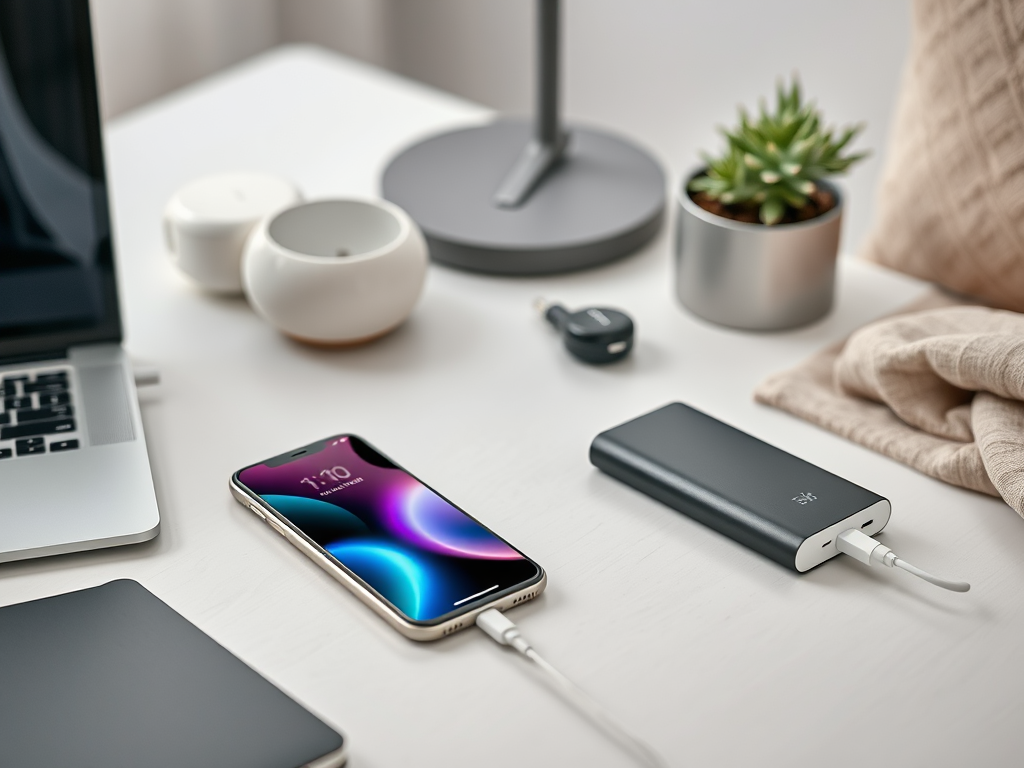In today’s fast-paced digital landscape, smartphones have become an indispensable part of our lives. From staying connected with friends and family to managing work responsibilities, these devices play a pivotal role. However, many users remain unaware that how they manage their phone’s battery can significantly affect its lifespan and performance. Frequent full discharges may seem harmless, but this common practice can lead to long-term damage. Understanding and applying effective battery management techniques can enhance both longevity and efficiency. This article delves into the intricacies of battery management, shedding light on why you should avoid letting your phone die regularly.
Understanding Lithium-Ion Batteries

Lithium-ion batteries are the backbone of most modern smartphones, providing the energy needed to power a myriad of applications. These batteries require specific care and handling to ensure they operate efficiently throughout their life cycle. One key aspect to consider is the charging cycle, which refers to how the battery is depleted and recharged. Each full cycle, typically defined from 100% to 0% and back again, puts stress on the battery’s cells. Frequent charging cycles can lead to a decline in overall battery health, cutting down its longevity.
Another crucial factor is the depth of discharge. This means how low you let your battery drain before recharging. If you habitually allow your phone to drop to zero, you’re likely accelerating the wear on its battery. By understanding these principles, users can optimize their phone’s performance while protecting extensive battery deterioration.
Consequences of Letting Your Phone Die

While it may feel natural to let a phone run out of juice, this behavior can lead to serious repercussions. Regularly allowing your phone to reach a dead state can expose it to detrimental outcomes. One of the most concerning issues is decreased battery lifespan. When you repeatedly drain your battery to the ground, you risk reducing its overall capacity to hold a charge effectively. In some cases, users may find that their phones hold less power after a year or two, significantly diminishing usability.
Additionally, the impact on performance cannot go unmentioned. A dead battery has the potential to cause erratic behavior in smartphones, such as lagging responses or constant freezing. These issues can disrupt your daily activities and lead to frustrating experiences. Managing your battery wisely can prevent such inconveniences and keep your device running smoothly.
| Battery Level (%) | Recommended Action |
|---|---|
| 20% and below | Charge your phone soon to prevent deep discharge. |
| 20% – 80% | Ideal range for performance and longevity. |
| 80% and above | Avoid keeping it plugged in if not necessary. |
Best Practices for Battery Management
To maximize the performance and lifespan of your smartphone’s battery, here are some best practices to follow:
- Keeping Your Battery Charged: Aim to maintain your battery level between 20% and 80%, as this ensures optimal performance.
- Avoiding Full Discharges: Prevent your battery from reaching 0%, as it can harm the internal chemistry and reduce capacity.
- Utilizing Power-Saving Modes: Most smartphones come equipped with power-saving options that can help extend battery life when needed.
Incorporating these best practices can help alleviate common battery woes. It’s crucial to build a habit of regularly charging your phone before it dips too low. This can ultimately save you from needing a replacement battery sooner than anticipated. Also, keeping an eye on power-hungry applications can extend the time between charges. Best of all, you will avoid unexpected shutdowns during crucial moments.
Conclusion
Proper battery management is essential for maintaining the health and efficiency of your smartphone. By understanding how lithium-ion batteries function and implementing effective practices, users can significantly prolong their device’s lifespan and enhance performance. Avoiding the common pitfall of allowing your phone to die regularly is crucial to protecting your investment. So, the next time you consider letting your battery hit rock bottom, remember—smart management today leads to a better-performing device tomorrow.
Frequently Asked Questions
- What is the ideal battery level to maintain? It is best to keep your smartphone’s battery level between 20% and 80%.
- Can letting my phone die ruin the battery? Yes, letting your phone frequently reach 0% can reduce its overall lifespan.
- Is it better to charge my phone overnight? Charging overnight is generally safe, but try to unplug it once it reaches 100% to prevent unnecessary stress on the battery.
- What should I do if my battery drains quickly? Check for apps that may be using excessive power, reduce screen brightness, and consider resetting settings or replacing the battery if issues persist.
- Do different apps affect battery life? Yes, resource-heavy apps can significantly impact battery consumption, especially when not in use.


